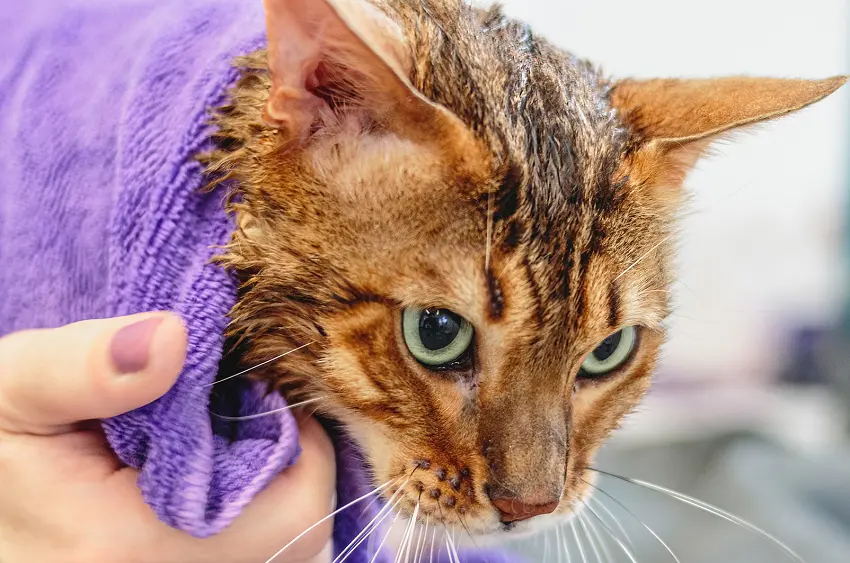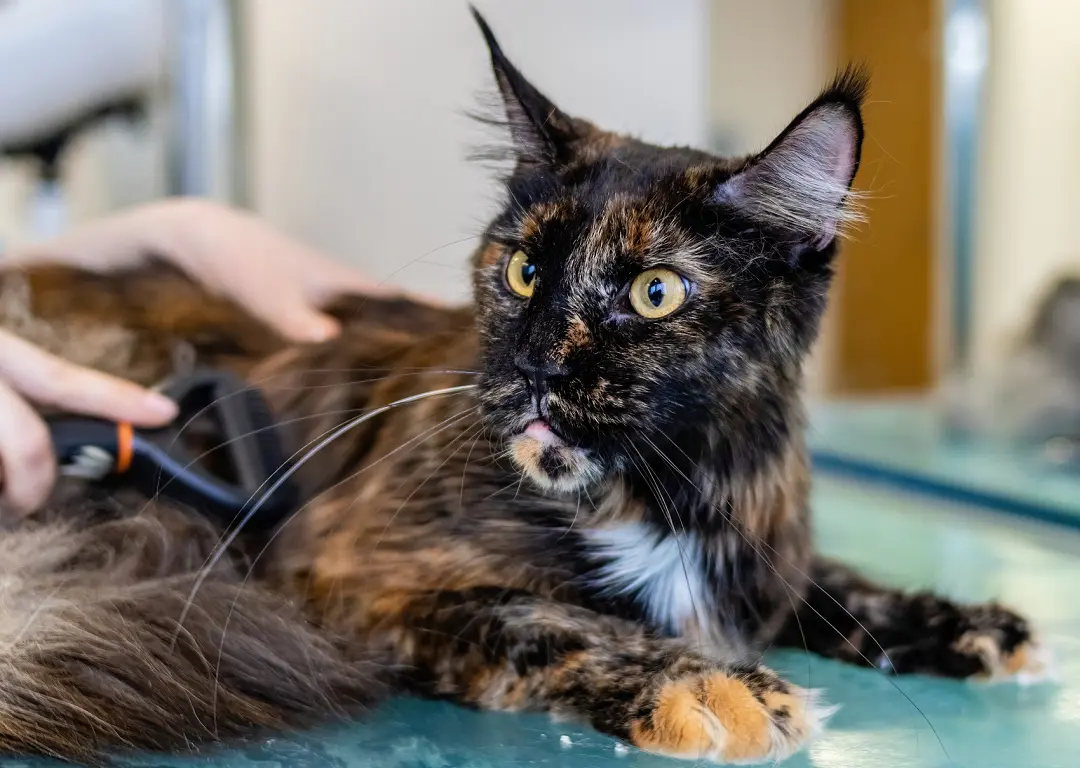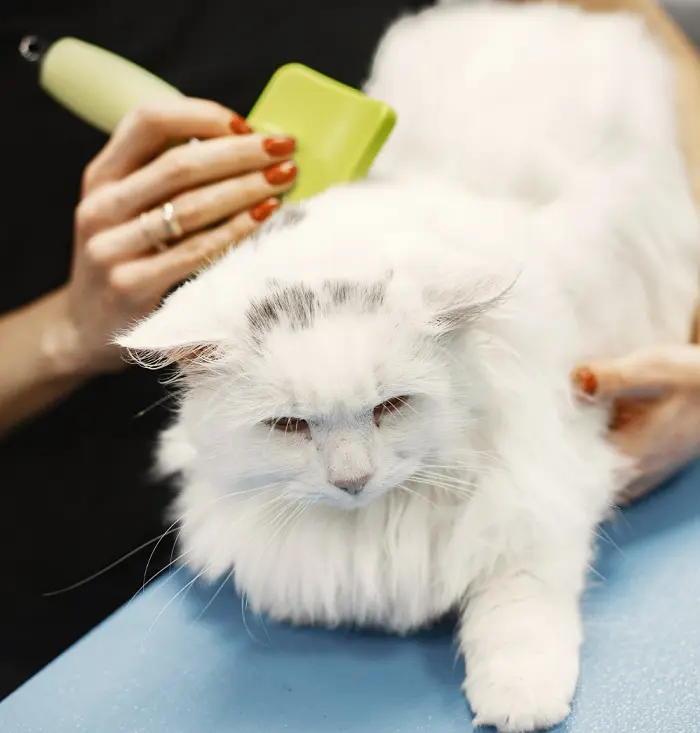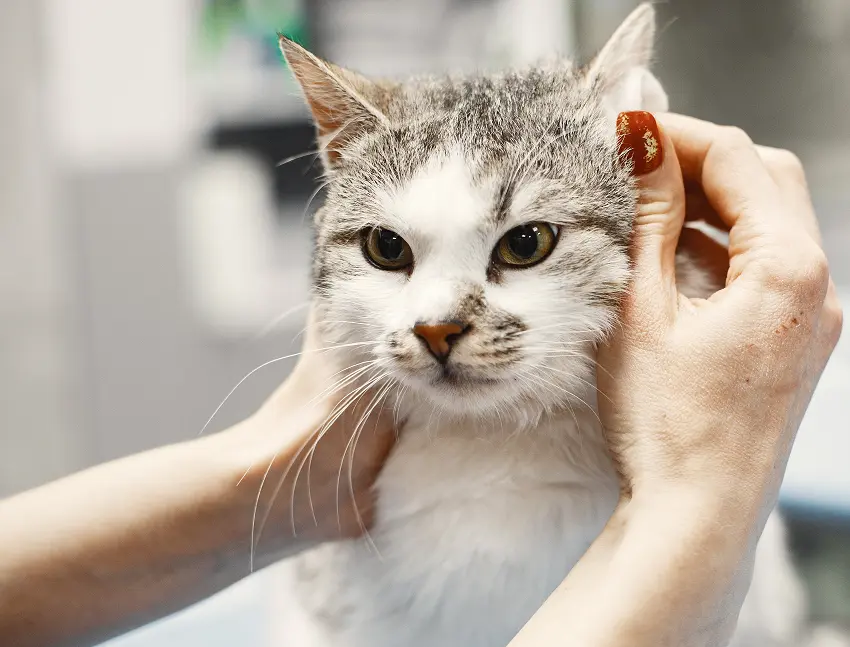How To Groom A Cat That Hates It: 7 Effective Tips
My cat Watson isn’t the biggest fan of grooming. He scratches, bites, and tries to escape whenever it’s bath time or when we have to trim his claws. Knowing how to groom a cat that hates it isn’t an easy task, but there’s always a workaround for this situation. As a cat owner, I will share my personal tips and secrets to get through cat grooming without bloody scratches.
Why do cats hate being groomed?


Just because they hate grooming doesn’t mean cats are jerks. There’s a reasonable explanation as to why many felines just don’t like being cleaned.
First of all, grooming is an unfamiliar sensation to cats. They were used to grooming themselves, so if you try to touch them with a brush or use a buzzing nail clipper, it will freak out the cat.
Aside from that, rescue cats probably had a bad grooming experience in the past. This will make them aloof and scared of grooming.
Also, you shouldn’t discount the fact that you’re not handling the cat properly. Your hold is probably too tight that it’s already hurting the feline. However, some cats just don’t like being restrained or kept in a specific position for long periods. I’ve proven that, time and again, with my cat Watson. Learn here how to restrain a cat for grooming
Lastly, your cat probably has skin or coat problems that become uncomfortable when you’re grooming. It could be a skin infection, matted fur, or in worst cases, hyperesthesia.
Tips to groom a cat that hates it
Grooming a cat that loathes it is challenging. I can’t remember how many scratches and bites I had by just brushing Watson’s fur(Learn here why does my cat scratch the floor before drinking water). The good thing is that he’s calmed down after turning a year old. If you’re dealing with the same thing, the following tips will help on your cat’s next grooming session:

1. Trim the claws first
The golden rule of grooming a cat is to start by trimming its claws. Unless you want to end up with wounds, you should do this first. You’d have to restrain the cat to trim its claws safely.
Always do this as carefully as possible. You should avoid hitting the quick, or your cat’s claws will bleed. The quick is the pink portion right where the claw meets the paw. This is a blood vessel that you should never, ever, cut.
Those with squirmy cats opt for pet nail grinders. These have a rotating grit that will sand the tips of the claws. This prevents hitting the quick while making it easy to fix sharp edges on your cat’s paw nails.
2. Get the right grooming tools
Before you perform any grooming task, make sure that you have the right tool for it. Get the right brush that suits your cat’s fur, a cat shampoo, cat toothbrush, nail clipper, and so on. All of these won’t just make cat grooming easier. It will also keep your pet safer and comfortable.
You don’t really have to spend a fortune on cat supplies. For example, I got my cat’s slicker brush at a clearance sale for just $10. It’s already a great buy compared to its original price tag.
The key here is finding the right tools based on your cat’s need. This is highly dependent on your cat’s coat type and if it has an underlying health problem.
3. Shower the cat with treats
If you want your cat to be more cooperative during grooming, you have to associate the experience with something positive. Shower the kitty with treats as you groom them. This will teach your cat that grooming isn’t really that bad. Over time, your cat will behave better and bite less. learn here what does it mean when a cat bite you hard
However, make sure that you factor in the extra treats into your kitty’s diet. It’s easy to overindulge a cat, especially during a long grooming session.
4. Stay gentle
No matter how annoying or frustrating it is, you should stay gentle with your cat. You wouldn’t want grooming to be associated with a negative or painful experience.
Hold your cat gently and go slow with the brushing. Always watch out how tight you’re gripping your cat’s body since it’s very easy to squeeze too firmly when they are trying to escape.
5. Let your cat relax
It’s important to time your cat’s grooming time on a period when it’s most relaxed. Give the kitty a short playtime and let its energy tone down. After a few minutes of rest, you can start grooming the cat. Go slow and provide many treats to encourage the cat to cooperate.
6. Let the cat go from time to time
Many cats don’t like being restrained. They are independent beings, so it takes a lot of training for a feline to get used to any type of physical limitations.
If your cat is trying to free itself from your hold, let it go on the tub. This will let the kitty know that your hold isn’t something to be scared of. You can lure the cat back with some treats to teach it that cooperating is a rewarded thing.
7. Consider using a sedative
In case all of these tricks don’t work on your cat, the best solution here is using a sedative. Always consult your cat’s vet first before you use any sedative products. It’s important to know whether your cat can tolerate the sedative or if it will suffer from potential side effects.
Most of the time, the vet can prescribe an oral sedative. Some of the widely used cat sedatives are buspirone, benzodiazepine, and alprazolam. However, these are prescription drugs, so you should never give them to your cat without the vet’s knowledge and permission.
You can also explore non-medical sedatives. Catnip is a convenient option, but it depends on how your cat reacts under the herb’s influence. Some cats become chill babies while others turn into mad kitties.
How can I calm my cat down for grooming?

Exercise and playtime can only do such much to calm a cat. You can also diffuse calming oils, but make sure that it’s safe for your pet.
The most effective solution is sedation. It has to be done with a veterinarian’s advice to ensure that your cat will be safe. Basically, your cat only needs a mild sedative to be calm during grooming. The small dose will also limit any adverse effects that could occur.
How do you bathe a cat that hates water?
Contrary to what many think, not all cats are afraid of water. Some seemed to be fishes born in a cat body. But if your pet isn’t fond of water, you need a specific approach.
First of all, don’t use a spray hose. The water pressure will startle and scare your cat even more. Instead, use your hand to scoop the water into the kitty’s body. Do this slowly and gently.
Make sure that you won’t get any water or shampoo into the cat’s eyes. This will result in your cat panicking. Most of all, reward with treats so you can associate water with something positive. Please read here how to give a kitten a bath
Why does my cat bite me when I brush him?
There are several explanations here. First, your cat probably hates the sensation of brushing. It could be that the brush tips are scraping the kitty’s skin. Another possibility is that your cat isn’t just used to being brushed or held at all.
Lastly, your cat might think that brushing is a form of playtime. This is why some cats will playfully attack the brush or your hand.
How often should you groom a cat?
Some grooming tasks have to be done more frequently than others. For example, cats don’t need frequent baths, so once every six weeks will do.
Meanwhile, trimming your cat’s nails should be done every two weeks. This depends on how fast your cat’s claws grow.
Moreover, brushing should be done daily using a pin brush. This is to fix mild tangles before it becomes matted or heavily knotted.
As for tooth brushing, vets recommend that you do it on your cat every day. But if you can’t manage such a schedule, once a week will do. Just make sure that you use toothbrush and toothpaste made for cats. Human toothpaste is packed with chemicals toxic to felines, so never use it on your pet. Please read here how to keep cats teeth clean without brushing
Conclusion
Knowing how to groom a cat that hates it is a chore. You have to try a few tricks to help your cat calm down and cooperate. If any of it isn’t working, you can always consider using a sedative recommended by the vet.
